Analyzing the 'Sweet Home' Web Comic: Themes and Style
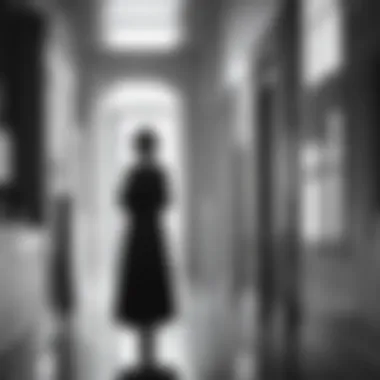

Intro
The 'Sweet Home' web comic stands out as a powerful exploration of human emotions against a chilling backdrop of horror. In this digital age, where comics have seamlessly blended artistry with storytelling, 'Sweet Home' captures the imagination by intertwining character experiences with societal examination. This article aims to traverse the intricate levels of this piece, offering insights into its character dynamics, thematic depth, and cultural implications.
Character Profiles
Overview of Main Characters
The characters in 'Sweet Home' are not merely vehicles for the plot; they are complex entities embodied with their own aspirations, fears, and vulnerabilities. At the heart of the story lies Hyun, a reclusive yet deeply introspective protagonist. Transitioning from a basal existence of solitude, he is thrust into a relentless fight for survival against monstrous threats emerging from his surroundings. His journey reflects a battle against not just physical foes but also the demons of one’s own psyche.
Another significant character is the resourceful and fierce Seo. While she brings a sense of action and determination, her backstory further enriches the narrative. The interplay between Seo's bravery and Hyun's internal struggles illuminates varying coping mechanisms in dire situations.
Supporting Characters
The supporting cast adds layers to the story, representing a microcosm of society grappling with fear and uncertainty. Characters like Min, the steadfast ally, and Jisoo, whose rebellious spirit introduces tension, reveal diverse reactions to terror and despair. Each character’s unique response fosters a rich dialogue on human nature when faced with unimaginable horrors.
Theme Exploration
Central Themes
In dissecting 'Sweet Home', theme exploration is paramount. At its core, it navigates themes of isolation, fear, and human resilience. The narrative doesn’t simply aim to frighten its audience; it captures the essence of being human when confronted by the inevitable darkness—both outside and within. The horror trope is cleverly employed to mirror societal issues, including mental health and existential dread.
Cultural References
Culturally, 'Sweet Home' interlace significant references that resonate strongly with contemporary audiences. The monsters, serving as reflections of human flaws, speak volumes about how societal fears manifest in various forms. This comic captures the zeitgeist, addressing themes that echo in current society—alienation, survival instincts, and the search for hope.
Popular Series and Recommendations
Top Anime Series of the Year
As readers traverse various narratives in the horror genre, they might find themselves intrigued by anime series that echo the agonizing suspense present in 'Sweet Home'. Shows like Jujutsu Kaisen and Tokyo Revengers have captivated audiences, each with its lush animation and gripping story arcs.
Hidden Gems in Manga
Aside from mainstream hits, several lesser-known manga are worthy of exploration. Parasyte offers a thought-provoking look at humanity intertwined with horror, while I Am a Hero presents a unique narrative on zombie apocalypse themes, blending horror with psychological insights.
“Horror is not in the monster, but in how they reflect our deepest fears.”
Prelims to Web Comics
In a world where storytelling continuously evolves, web comics have carved a niche for themselves, often reflecting the zeitgeist of our digital age. This section expands on the significance of web comics and sets the stage for a deeper exploration into the phenomenal 'Sweet Home.' Web comics serve as a fusion of traditional comic art and modern platforms, allowing creators to bypass conventional publishing routes and directly connect with their audience. This democratization of storytelling is not just refreshing; it opens the floodgates for diverse narratives that might never find a place in mainstream media.
The importance of web comics can be seen in how they break barriers. For aspiring artists and writers, sites like Webtoon and Tapas offer an accessible arena to showcase their work, cultivating creativity without the constraints imposed by publishers. Moreover, this format allows for a more dynamic interaction between creators and readers, as feedback is instantaneous and shapes the narrative in real-time.
By diving into 'Sweet Home,' we can grasp how web comics encapsulate broader cultural conversations—offering commentary on themes like isolation and survival that resonate profoundly today.
Defining Web Comics
Web comics are essentially comics published online, spanning various genres, styles, and formats. Unlike traditional printed comics, they can be updated regularly, keeping readers engaged without long waiting periods. Most web comics are serialized, meaning the story unfolds gradually, drawing readers back for the next installment. That's what captures the hearts of audiences so consistently; it transforms casual views into a loyal fanbase.
There are distinct features that define web comics:
- Accessibility: Anyone with an internet connection can easily explore web comics, making them a universal form of art.
- Variety: Writers and artists from all walks of life contribute, leading to an eclectic mix of styles and topics.
- Interactivity: Many web comics encourage reader engagement either through comments or social media, blurring the lines between creator and consumer.
The Rise of Digital Storytelling
The rise of digital storytelling is a response to our increasingly interconnected world. As audiences spend more time online, traditional narratives have found new life on digital platforms. The shift from paper to screen has not diminished the emotional weight of storytelling; instead, it has provided new avenues to explore complex themes and characters. Web comics, like 'Sweet Home,' exemplify this transition by utilizing technology to tell gripping tales that explore societal fears and personal turmoil.

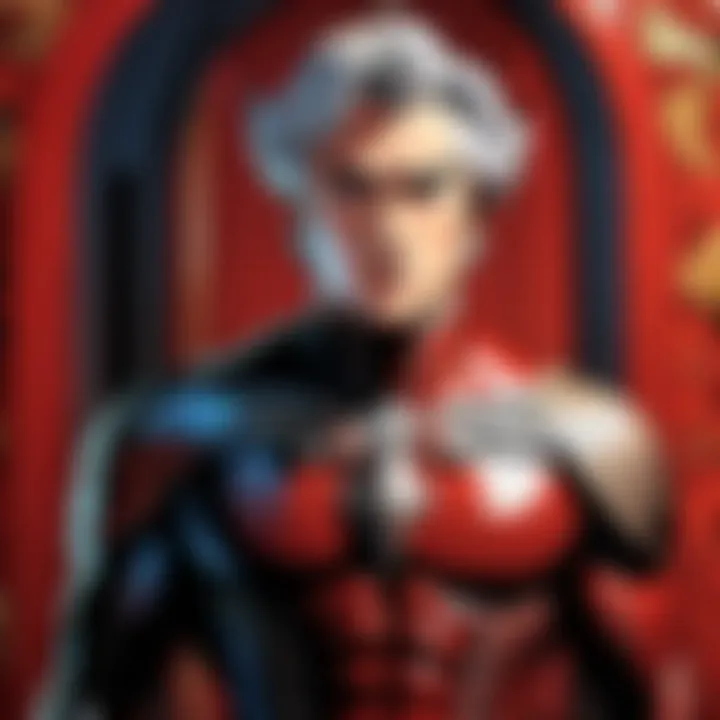
Storytelling has always been about connection—digital storytelling enhances this by allowing creatives to traverse cultural boundaries. For instance, a dark tale set in South Korea can tap into global fears around isolation and anxiety, making it relatable across various demographics. Here, the horror genre serves as fertile ground; it encourages exploration of themes that might seem too uncomfortable in a more traditional storyline.
We also see a shift in structure; the way stories unfold can be interactive, weaving elements of choice and consequence into the narrative. This openness to experimentation in form and content makes web comics a promising frontier for storytelling, as it reflects the nuances of modern life.
In summary, the introduction of web comics as a legitimate medium enhances the framework for exploring diverse narratives. Understanding their foundations will enrich our examination of 'Sweet Home,' offering insights into its artistry and its resonance with today's cultural landscape.
Overview of 'Sweet Home'
The significance of Sweet Home within the realm of web comics cannot be overstated. This interactive storytelling medium has paved new paths in the horror genre while grappling with the intricacies of human emotions and societal reflections. As we explore the various dimensions of Sweet Home, one can see how it encapsulates the essence of modern digital storytelling, engaging a growing audience of anime and manga enthusiasts. Understanding this web comic not only sheds light on its plot and characters but also provides insights into how contemporary issues resonate through the lens of horror.
Genesis of Sweet Home
Sweet Home was born from the creative minds of Kim Carnby and Hwang Seon-joon, who were keen on redefining the boundaries of horror in digital media. Their collaboration was not just a product of individual talent, but a synergy that emerges when traditional storytelling meets innovative art. Unlike many preliminary works, Sweet Home uses online platforms as the primary canvas for its narrative. It was initially released as a webtoon, capturing readers with its gripping visuals and suspenseful storyline.
The comic stands out for its approach to character development, presenting a raw and honest depiction of survival. The backdrop of a world facing monstrous transformations serves as a stage for assessing the human condition, effectively marrying horror with psychological drama. In the early stages of its release, it quickly gained traction, drawing attention not only for its chilling premise but also for its unique storytelling style, one that encourages readers to reflect while being entertained. The drive behind its creation lies in both authors wanting to challenge themselves and the audience, leading to a narrative rich with unexpected twists.
Plot Synopsis
Set against the disturbing backdrop of a collapsing civilization, Sweet Home tells the story of Hyunsoo, a seemingly ordinary high school student grappling with his own inner demons while the world outside plunges into chaos. As monstrous creatures inspired by human fears take over, Hyunsoo and a disparate group of survivors find themselves holed up in an apartment complex. The plot thickens as they face not only the terrifying creatures but also the conflicts within the group, accusations, and even betrayal.
The storyline expertly weaves together personal struggles with the overarching theme of survival, illustrating how fear can either unite or fracture a community. Readers are invited into the lives of each character, creating a connection that is both intimate and tense. Not merely a fight against external monsters, Sweet Home offers commentary on the monsters that dwell within us—our fears, regrets, and moral dilemmas. The narrative unfolds in a series of gripping episodes, with each chapter ending on a cliffhanger that keeps the audience clamoring for more.
"In moments of despair, we reveal who we truly are, laid bare in front of life’s most harrowing challenges."
The brilliance of Sweet Home lies not just in its ability to entertain, but also in forming a mirror reflecting societal fears. As the story progresses, the lines between humanity and monstrosity blur, prompting readers to contemplate the cost of survival in a world riddled with chaos.
Artistic Elements
The realm of web comics often hinges on the artistic elements that breathe life into the narrative. In the case of 'Sweet Home', these components do more than merely decorate the pages; they serve as vital conduits for storytelling. The choice of visual style, techniques, and color palette not only captivate the audience but also enhance the emotional resonance of the plot. As a result, examining these artistic elements offers insight into how they contribute to the overall impact and appeal of the comic.
Visual Style and Techniques
The visual style of 'Sweet Home' is a marriage of realism and stylization. The characters and environments are depicted with a degree of detail that invites readers into a gritty, often terrifying world. The linework is sharp, lending a tactile quality to the illustrations, which amplifies the horror elements woven throughout the story. The artist employs a variety of techniques, including dynamic angles and perspectives, to create a sense of urgency and chaos during climactic moments.
Moreover, moments of stillness contrast sharply with the frenetic action, allowing tension to build steadily. An example of this contrast is seen when the protagonist gazes into the abyss of their undead neighbors or when the grotesque transformations occur. Such visual techniques pull the reader into a visceral encounter, making the terror almost palpable.
Additionally, the incorporation of panel layouts further enhances the narrative flow. Unconventional arrangements create an atmosphere of disorientation, mirroring the characters’ own experiences as they navigate through the supernatural chaos. By playing with the structure of panels, the comic breaks the monotony, making each turn of the page feel like an unpredictable venture into the unknown.
Color Palette and Symbolism
Color, a silent yet powerful player in storytelling, takes on a prominent role in 'Sweet Home'. The palette is predominantly dark and muted, punctuated by instances of jarring color that signify moments of fear, loss, or revelation. Shades of gray and deep blues set the tone, enveloping the reader in a sense of foreboding. This choice not only aligns with the horror genre but also evokes feelings of isolation and despair, central themes of the narrative.
Symbolism through color is particularly noteworthy in 'Sweet Home'. For instance, bright reds often mark moments of violence or gore, acting as visual markers that heighten emotional responses. In contrast, earthy tones might signify safety or moments of genuine connection among the characters.
"Visual storytelling depends heavily on understanding color depth and symbolism. In 'Sweet Home', these elements expose the underlying fears of humanity facing the monstrous and the unknown."
The application of color transcends mere aesthetics; it is a tool for psychological manipulation. As readers immerse themselves in the comic, the strategic use of hues amplifies their emotional engagement, ensuring that they navigate not just a story of survival but one rich with nuance and poignant reflections on fear and humanity.
Character Analysis
Character analysis is a cornerstone in understanding the depth and nuance of any narrative, and this is especially true in the case of 'Sweet Home.' The characters, both protagonists and antagonists, serve not only as vehicles for the plot but also as reflections of broader human experiences. By delving into the motivations, arcs, and roles of these characters, readers can uncover the intricate layers of meaning embedded within the narrative. This analysis also enhances the reader's engagement, allowing for a more visceral connection to the unfolding horrors and moral quandaries presented in the comic.
Protagonists and Their Arcs
The protagonists in 'Sweet Home' are painted with a broad spectrum of emotions and transformations. The main character, Hyunsoo, starts as a typical loner, engulfed in despair amidst his bleak surroundings. His transformation throughout the series is not just a physical journey, but rather an emotional rebirth. As the world around him crumbles, he gradually embraces the primal instincts of survival, wrestling with his own fears and insecurities. This character arc resonates with many readers, who can relate to the feeling of being lost and finding one’s purpose under dire circumstances.
Hyunsoo's experiences reflect broader themes of vulnerability and resilience. His interactions with other residents—each carrying their own emotional baggage—further develop his character.
The residing question many readers may ponder is, "What does it mean to truly survive?" As Hyunsoo faces each new threat, he sheds old layers of himself, revealing the raw essence of human nature.
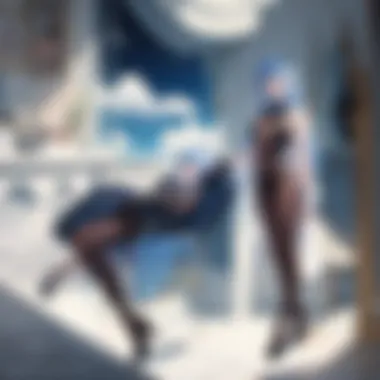

Antagonists and Their Motivations
The antagonists in 'Sweet Home' are not mere obstacles; they embody complex motivations that challenge the protagonists and push the narrative forward. Monsters, in this context, serve as external manifestations of internal fears. They represent societal evils, haunting pasts, and inner demons.
Take, for instance, the fearsome creature known as the "Giant." This character is not just a product of horror but symbolizes the overwhelming nature of despair and hopelessness. The motivations attributed to these antagonists often reflect a twisted form of survival and desperation, often steeped in their own tragic backstories. By humanizing the monsters, 'Sweet Home' challenges readers to contemplate their own moral compass and question what truly constitutes evil. Are these beings merely reflections of human failings?
Exploring this dimension of the antagonists leads to a deeper understanding of moral ambiguity, where actions can blur the lines of right and wrong.
Supporting Characters and Their Roles
Supportig characters in 'Sweet Home' enrich the narrative tapestry, providing context and depth to the main storyline. Each character, from the pragmatic to the overly optimistic, adds layers of complexity to Hyunsoo’s journey.
For instance, the character of Seo-yoon acts as a stabilizing force in the chaotic environment. Her nurturing disposition and strong sense of community foster connections among the group and draw out hidden strengths in Hyunsoo and others.
Each supporting character also embodies various societal roles—those who give up, those who fight, and those who hold steadfast hope. By investigating their motives, readers can gain insight into the stark realities of human nature during times of crisis.
Ultimately, these supporting figures serve not just as a counterbalance, but also as symbols of the multifaceted nature of humanity, illustrating that our individual arcs intertwine to form a collective struggle against adversity.
In summary, the character analysis in 'Sweet Home' reveals the profound complexity of human emotions and morality, making it a poignant exploration of survival and identity.
Themes and Motifs
In any narrative, themes and motifs act as the backbone, weaving through the story to give it depth and resonance. In 'Sweet Home', these elements are not merely superficial decorations; they delve into the human psyche and societal constructs that shape our realities. By exploring the themes of isolation, survival, morality, and urban legends, this comic speaks not just to the characters within its pages but also to the readers who find reflections of their own lives and fears.
Isolation and Survival
Isolation is a recurring theme in 'Sweet Home', manifesting both physically and emotionally. The characters are trapped not only in their environment but in their mental states as well. The fear instilled by the monstrous transformations that plague the characters serves as a metaphor for the real-life isolation people experience—be it from society or their own emotional struggles.
Survival becomes a driving force, fueling motivations and interactions among characters. For instance, when the characters face existential threats, their instincts kick in, showcasing raw human behavior. This is where the story diverges into a complex web of decisions—some noble, some selfish. The struggle to adapt in a world where everything familiar has been turned on its head rings true to many lives caught in modern urban life. It challenges the reader to ponder, "How would I react in similar circumstances?"
"Isolation is the fabric of our modern lives, broken by the instinct to survive against all odds."
Human Nature and Morality
The narrative intricately dissects the essence of human nature through its characters. As the story unfolds, the question of morality can often feel like quicksand—shifting, unpredictable. There is a constant battle between self-preservation and moral duty, which plays out vividly during the characters' interactions. Their decisions frequently hang in a delicate balance between right and wrong, forcing readers to question their own moral compasses.
Moments of desperation lead some characters to abandon their ethical beliefs, revealing the darker sides of humanity. The decisions made often produce ramifications that linger long after choices are taken. Readers cannot help but ponder: Is it justifiable to sacrifice another for one's own survival? How far would one go to protect those they care for? 'Sweet Home' encapsulates these dilemmas, showing humanity at its most fragile and most feral.
Urban Legends and Cultural Reflections
Urban legends have a way of capturing truths or fears that often bubble beneath the surface of society. In 'Sweet Home', these legends intertwine with the central narrative, enriching the experience by serving as a lens through which societal anxieties are projected. The significance lies in how these tales resonate with contemporary issues, such as mental health or social alienation.
The way these legends are presented nudges readers to recognize cultural fears—they serve as cautionary tales reminding individuals of the consequences of neglecting societal problems. As the narrative progresses, it becomes evident that the monsters represent more than just physical threats; they symbolize the collective fears born from urban settings.
Societal Implications
The exploration of 'Sweet Home' goes beyond the confines of mere entertainment; it offers a lens through which to examine the current social landscape. The web comic, with its graphic depiction of horror mixed with human emotion, elucidates complex themes that resonate deeply with readers in a society laden with anxieties. In this section, we will reflect on two crucial aspects: the comic's commentary on modern society and the audience's reactions to the horror genre, emphasizing the relevance these topics have in today's context.
Commentary on Modern Society
'Sweet Home' serves as a mirror reflecting the fears and uncertainties of contemporary life. The narrative intricately weaves societal issues, such as mental health struggles, isolation, and the impact of technology on human connection. Each monster in the story can be seen as a metaphor for the inner demons individuals face. This allows us to relate not only to the horror elements but also to the human experience at large.
For instance, the character Hyun's evolution from a reclusive young man into a reluctant hero encapsulates the journey many people navigate amidst societal pressures. The comic addresses how, in a world increasingly dominated by social media, genuine connections can become superficial, leaving people feeling more isolated than ever.
Furthermore, the comic raises questions about how society deals with those who are different or struggling. In its portrayal of a world where societal norms are turned on their head, 'Sweet Home' encourages us to examine our reactions to others who are marginalized or in distress. This narrative invites readers to confront uncomfortable truths about acceptance and understanding, which can lead to greater empathy in real-life situations.
"In every monster, there's a story begging for understanding."
Reactions to the Horror Genre
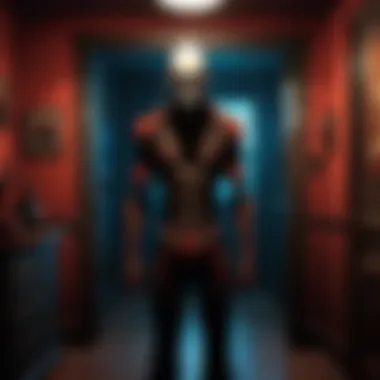
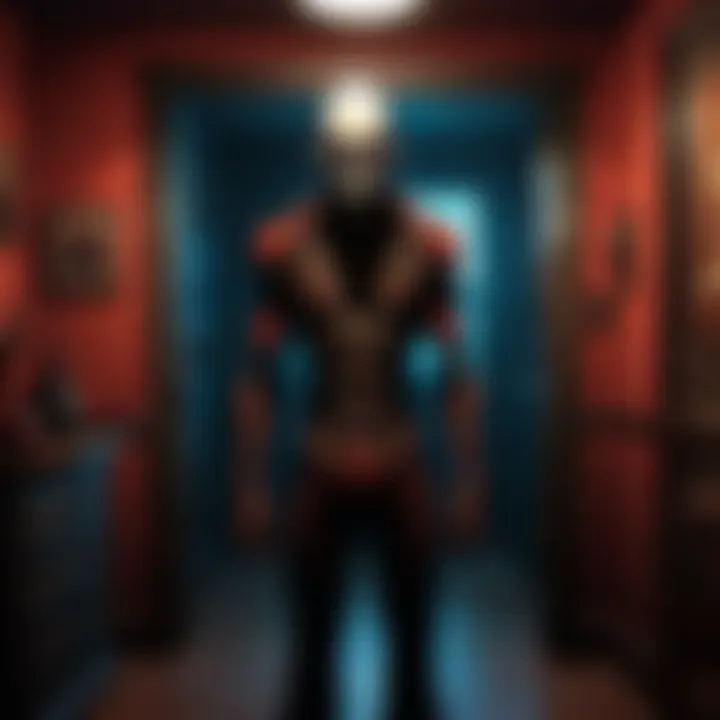
The reception of 'Sweet Home' within the horror genre is another area that invites thoughtful discussion. Horror has often been dismissed as lowbrow entertainment; however, 'Sweet Home' challenges that notion by embedding deeper philosophical questions within its terrifying narrative. The blend of horror with profound emotional and societal commentary marks a resurgence of thoughtful storytelling in this genre.
Audiences are increasingly drawn to stories that do not shy away from darkness; they find comfort and resonance in themes that approach life’s harsh realities. The comic invites readers to grapple with their own fears while simultaneously encouraging reflection on collective anxieties.
Moreover, this willingness to confront unsettling themes has sparked conversations around the purpose of horror. It pushes boundaries, forcing society to engage with taboo subjects often left unspoken. The fascination with monsters, in this context, transforms from mere entertainment into a means of exploring the psyche and society’s worldview.
In a landscape where horror can be a mirror to the soul, 'Sweet Home' provides ample fodder for discussion, compelling readers to reassess their positions on fear, morality, and community. It’s not just about scares; it’s about understanding what scares us and why.
Cultural Impact of 'Sweet Home'
The cultural significance of 'Sweet Home' stretches beyond its captivating storyline and striking visuals. This web comic has emerged as a poignant reflection of contemporary societal issues, tapping into deep-seated fears and anxieties prevalent in modern life. By delving into the nuances of 'Sweet Home', we can appreciate how it both resonates with audiences and influences the landscape of web comics, shaping narratives and aesthetics within the genre.
International Reception and Adaptations
Upon its release, 'Sweet Home' caught the attention of a global audience. The initial response from readers was a blend of fascination and horror, with many praising its gripping narrative and intricate character development.
- Popularity Across Borders: International readers found themselves captivated by the themes of survival and the horror of isolation. Fans from various countries engaged with the content, creating discussiions in forums, review sites, and social media. This led to a diverse array of interpretations and discussions about the comic's deeper meanings.
- Adaptation into Other Media: The comic's success naturally paved the way for adaptations. The most notable is the Netflix series, which broadened its reach drastically. The adaptation did alter some plot lines and character arcs, but it retained the essence of dread and societal commentary that made the comic so beloved. This transformation exemplifies how web comics can transition into mainstream media while retaining a loyal fanbase.
"The twisty roads of adaptation are challenging, but they also sparkle with potential for innovation and new dialogues."
Influence on Contemporary Web Comics
'Sweet Home' is not just another title in the vast world of web comics; it has set a benchmark for storytelling and art. Its influence can be traced in several key areas:
- Narrative Complexity: Many newer web comics have adopted similar narrative strategies, combining elements of horror with profound social critiques. Creators are now more willing to explore dark themes that reflect real-world anxieties, echoing the tone and style that 'Sweet Home' established.
- Visual Styles: Artists influenced by 'Sweet Home' are experimenting with their visual storytelling techniques. The gritty and raw art style has inspired a wave of creators to break away from traditional aesthetics and delve into more expressive, sometimes unsettling graphics to convey deeper emotional tones.
- Character-Driven Stories: The character arcs in 'Sweet Home' serve as compelling templates for many emerging web comics. The way it develops multifaceted characters facing moral dilemmas has encouraged a new wave of storytelling that emphasizes character depth rather than solely focusing on plot.
In summary, the cultural impact of 'Sweet Home' on both international and contemporary spheres is profound. It not only shaped the horror genre within web comics but also sparked conversations about societal fears, proving that web comics can be more than mere entertainment; they can serve as reflections and critiques of the world we live in.
The Future of Web Comics
The realm of web comics stands on the brink of remarkable evolution. The pervasiveness of digital access reshapes how audiences consume stories and how creators convey them. This ongoing transformation underscores the relevance of topics such as storytelling techniques, artistic innovations, and community engagement. Understanding these aspects not only delineates the course of Sweet Home and similar works but also prepares fans and creators alike for what lies ahead.
Trends and Innovations
Innovation in web comics has become a regular feature, akin to unexpected twists in a plot. As technology advances, the integration of tools for animation and interactive storytelling is rewiring our expectations. Readers have come to embrace not only static images but also animated sequences that create an immersive experience.
- Augmented Reality (AR): Some web comics are beginning to explore AR features, bringing characters into the reader’s real-world environment through various apps. This fusion of digital with the tangible offers an extraordinary experience that enhances engagement.
- Crowdfunding and Independent Publishing: Platforms like Patreon and Kickstarter allow artists to fund their creative projects directly through audience contributions. This model is a double-edged sword, granting financial independence but also placing greater responsibility on creators to meet audience expectations consistently.
- Cross-Media Platforms: More creators are opting to tell stories across multiple formats—from comic books to short films—engaging readers on various fronts. It creates a richer narrative experience where different facets of the story can be explored in diverse media.
- Subscription Models: As seen with platforms like Webtoon and Tapas, subscription models are growng. This shift allows readers to access content on a modular basis, tailoring their experiences to their preferences and thus building a more personalized connection to the work.
Through these innovations, unique voices have the potential to emerge, setting the pace for the genre’s future.
The Role of Community in Comic Creation
Communities have always been at the heart of web comic creation. A significant factor in forming these narratives is the audience interaction that often shapes a creator’s journey. Online forums and platforms like Reddit serve as breeding grounds for aspiring storytellers who can share their art, receive feedback, and build connections with like-minded individuals.
- Feedback Loops: Artists benefit greatly from immediate feedback on their work. This exchange not only boosts creator motivation but also often leads to improvements in art styles and storylines based on audience reactions.
- Collaborative Efforts: Creators increasingly band together, pooling their talents to produce joint projects. This collaboration not only enhances creativity but also exposes them to varied stylings and ideas, leading to innovative storytelling methods.
- Fan Engagement: Fans are more than passive spectators; they actively participate by creating fan art, participating in discussions, and producing spin-off narratives. This engagement cultivates a culture of co-creation where fans and creators coexist, influencing one another.
- Diversity of Voices: The web comic community has fostered a platform where diverse narratives can thrive. Marginalized voices find spaces to tell their stories, leading to richer content that reflects the plurality of experiences. It fosters a sense of belonging and validates the narratives that might otherwise go unheard.
In this light, the community's integral role informs not only Sweet Home but the broader landscape of web comics, reflecting the direction in which digital storytelling is heading. The communal spirit encourages artists to push boundaries, experiment, and articulate what might be unsaid.
"As web comics continue to evolve, they hold the potential not just to entertain but to spark conversations that challenge the status quo and instill awareness of the societal intricacies present in our world."
The contributions of communities in shaping the future of web comics cannot be overstated, making it an essential aspect of their ongoing development.
Finale
When dissecting the intricate layers of the 'Sweet Home' web comic, it becomes evident just how crucial a conclusion can be to both the narrative and its readers. The closing thoughts not only summarize the key points discussed but also reflect on the broader implications of the themes explored throughout the comic. This is especially important for a work that intertwines horror with social commentary, as is the case with 'Sweet Home'.
Summing Up the Impact of 'Sweet Home'
The impact of 'Sweet Home' extends well beyond its immediate storyline. One of the most prominent elements is its ability to engage readers on an emotional level, prompting them to reflect on their own fears and human vulnerabilities amidst a rapidly changing world. The gripping nature of the narrative keeps enthusiasts flipping through the pages, while also offering them a mirror to society’s lingering issues.
- Cultural Resonance: The horror elements resonate with contemporary anxieties. Isolation in the urban setting, for example, is a fear that many can identify with.
- Character Depth: Each character’s arc adds richness to the overall tale, illustrating personal growth and moral dilemmas in dire circumstances. Readers find themselves rooting for the protagonists, even as they grapple with their darker impulses.
- Graphic Storytelling: The visual approach of 'Sweet Home' harmonizes perfectly with its themes. The stylized art not only enhances the horror aspect but also projects feelings of decay and despair, enriching the reading experience.
The confluence of storytelling and art in 'Sweet Home' exemplifies how web comics can elevate narratives by harnessing the strengths of digital media.
In summation, the significance of 'Sweet Home' in the landscape of web comics cannot be overstated. It serves as a testament to creativity, illustrating how the genre can provoke thought and discussion around complex societal issues. As the genre continues to evolve, the lessons drawn from 'Sweet Home' will likely influence upcoming creators, enriching the tapestry of digital storytelling even further.







